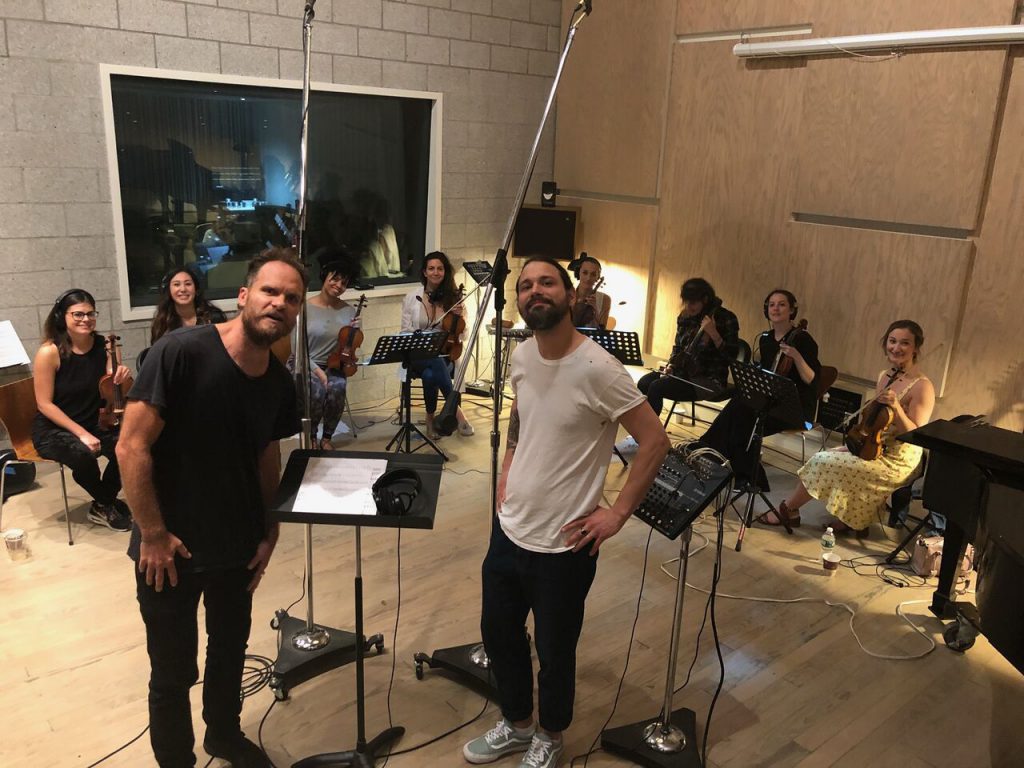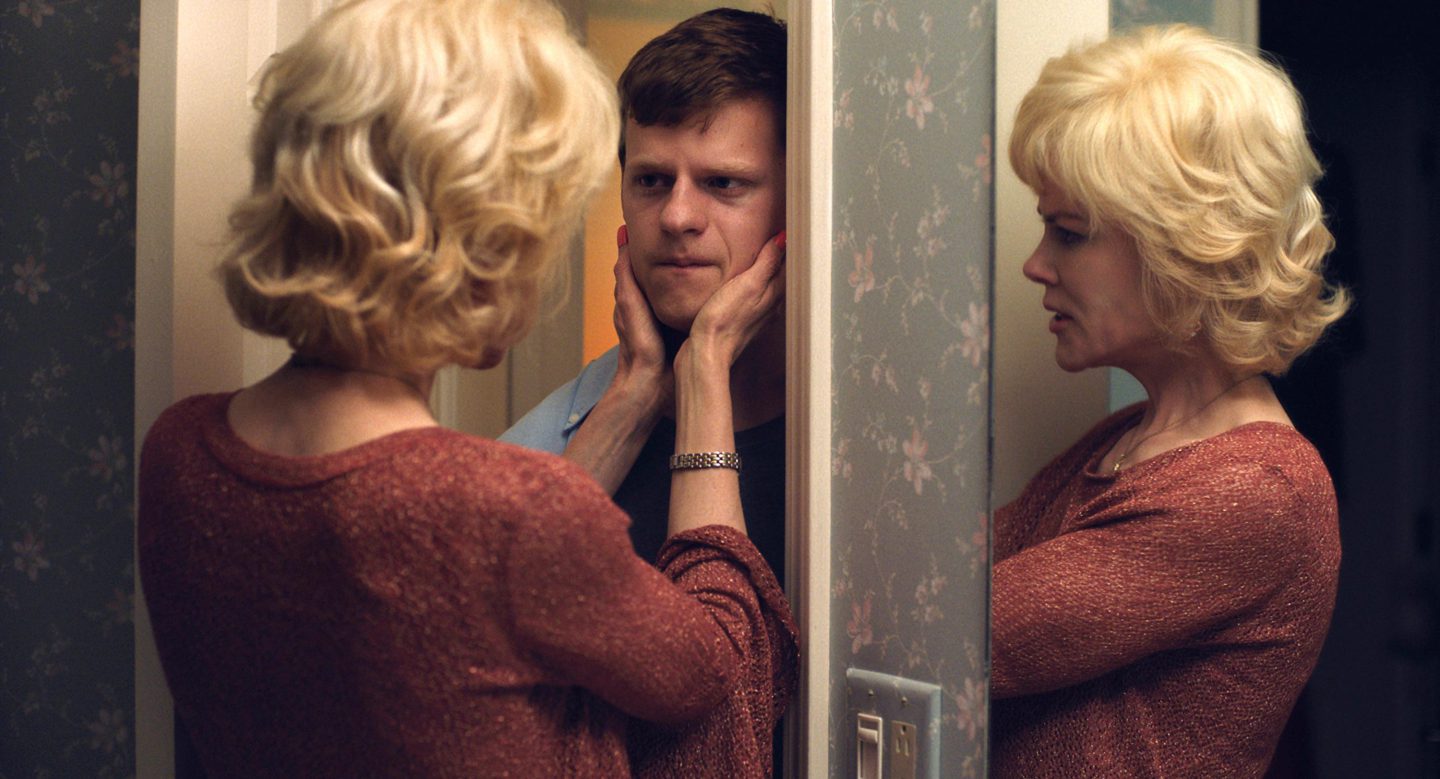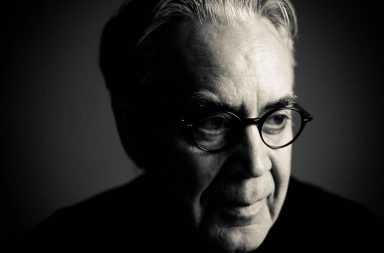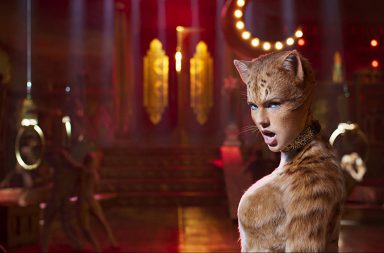There are times and circumstances in which the simplest and most obvious things become a form of activism. Talking about homosexuality, for one. Sir Ian McKellen rightfully noticed that no openly gay actor ever won an Academy Award for best actor but more than 50 straight actors have been nominated for playing gay characters – including the wins of Tom Hanks for Philadelphia and Sean Penn for Milk. The president of the world leading power, in barely more than two years, went from appearing at a rally with a rainbow flag marked ‘LGBT for Trump’ – yeah, what where they thinking? – to 1/ saying he would protect the LGBTQ community from Muslims and Mexicans, to 2/ disbanding the Presidential Advisory Council on HIV/AIDS, to 3/ not even referring to the LGBTQ community in his official World AIDS Day statement, to 4/ trying to ban transgender people from the military service. I purposefully did not take into account the positions of Mike Pompeo, Jeff Sessions, John Kelly, Tom Price and, of course, that of Mike Pence – who openly supported gay conversion therapy programs – and his anti-same-sex marriage rabbit, Marlon Bundo.
So yes, when you live in times like these, a film like Boy Erased is of public interest. Based on the memoir by Garrard Conley, Joel Edgerton’s sophomore film is all the more relevant for choosing to follow the path of an intimate narrative (and therefore for putting empathy on a character old enough to know what he stands for but too young to know how to deal with that) instead of moving into social issues and politics. As Joel Edgerton is writing, we have, in parallel Danny Bensi and Saunder Jurriaans’s equally subtle and intimate score. The pair of composers, who delivered unique compositions for films and series such as Sean Durkin’s Martha Marcy May Marlene, Denis Villeneuve’s Enemy, AMC’s Fear the Walking Dead and Netflix’s Ozark, crafts a nonjudgmental score which applies its minimalism and its restraint use to the communication of emotions, and at the same time, serves the film’s purposes.
Danny Bensi and Saunder Jurriaans provided Score It Magazine with an insight into their compositional process for Boy Erased, including their choices for the instruments, their inspirations and a couple of Joel Edgerton impressions.

Boy Erased (Joel Edgerton, 2018). Left to right: Lucas Hedges, Russell Crowe, Nicole Kidman. Focus Features. All rights reserved.
Score It Magazine: Boy Erased is Joel Edgerton’s second film and you were already familiar with his work since you already scored his first one, The Gift. At what stage did you become involved in this project?
Saunder Jurriaans: I think we were involved pretty early. I don’t know if he even talked to other composers, I think we were pretty much the first on his list because we got on board when he was given the script, before the movie started shooting.
You composed the score remotely, Danny, you were in New York while Saunder was in LA. Is it how you usually work together? How do you manage to compose together without being physically together?
S. J.: We do everything over the Internet, so, as long as our Internet is working, we send each other stuff on Dropbox. We’re synced. We’ve been doing this for quite a while now. When we started to work together, we were actually together in the same room. Then, when we got more busy, we learned that it was more efficient to have another stage and setup somewhere – back then, we had another room where we were working, we did some simple things there. Eventually, it became that each of us had a studio. In general, we like starting out writing for a project individually, and then coming together talking, one guy grabs the other’s work, takes things away and vice versa. It’s pretty intuitive, actually. Of course, for Boy Erased Danny flew out to L.A. when we did the orchestra recording and that kind of stuff. But that’s how we work, we Skype every day, look at each other’s face for an hour or so, talk about what’s going on. Sometimes we do music, too (he laughs).
Was there any temporary score? If yes, what did they use?
Danny Bensi: We started writing very early on, so there was a little bit of temp but it wasn’t really good… Which is a good thing! I don’t think they thought a lot about it because Joel knew we were gonna kind of take the reins and create a whole new tone for this film. It was temped to some of our stuff, maybe some cues from LA 92… But yeah, it was good in the sense that it wasn’t temped very thoroughly and Joel wasn’t attached to anything from the temporary score, so we could break out whatever they had put there.
Most of the films you scored – and Boy Erased is one of the best examples of that – are focused on the main character(s). Would you say that characters are your biggest inspiration when you compose?
S. J.: Most of the time, the main character is our main focus, but not always. We don’t score the characters necessarily, sometimes we score some sort of emotional states, like tension… In this case, we even scored from the perspective of a building. Like, you know, when a family moves to a house that ends up being haunted, and the score is from the perspective of the house, like the house is controlling everything. Or in this case, it is the LIA, which is the centre Jared goes to.
D. B.: It’s really about his internal emotional journey. For Boy Erased particularly, even when we introduced the thematic elements that describe the LIA or his family, we were always centred around the gears working in his head.

Danny Bensi (left) and Saunder Jurriaans (right) at a Boy Erased recording session. All rights reserved.
The purpose of the music in Boy Erased is radically different from what the film is telling. Was it clear from the start that you were going to focus on what is going on in Jared’s mind?
S. J.: Yeah. I think that’s what we wanted from the start. It was made easy in the sense that Lucas Hedges’ performance is so intense, and he’s always thinking and grappling with this situation throughout the whole thing, so that was immediately what we gravitated towards scoring. We also wanted to give this film a more unique tone and sound than any other drama and it seemed that the most creative way to do that was to create this kind of internal battle.
What Jared is going through in the camp is – I would call this a mind rape, because that’s what it is, forcing him against his will. It’s dehumanising, and the score illustrates that with this kind of oppressive, thriller film vibe to it which is quite disturbing.
D. B.: There’s a melody that starts with violins that you already hear in two other cues before that. I’ve always thought of ‘The Funeral’ as an alarm melody, you know, it’s three notes in a row played like an alarm bell. I didn’t think of it as an alarm bell since it’s played on violins, but then the melody repeats itself again and becomes this disturbing motif. We have sounds that are sharp and thin, quite grating on your ear, that are what Jared might be feeling inside his head. Then, two violins doing it in harmony shows a dialogue and then, an organ pedal underneath gives this sense of “nobody’s going anywhere.” It’s pretty difficult to move the music so you feel like you’re stuck. These are just simple ingredients to create an anxious feeling, but we also wanted it to be spacious. When you want to tell complicated things, bouncing around in one’s head, you can tell it with a lot of instruments or you can try to do it really simply. So anyway, when the funeral comes along, we give that melody, as if to say, all those feelings he felt some other times are now real and very, very strong and he’s deciding to really get out of there and leave. And there’s also the fact that this piece has some religious undertones, because it was a whole religious ceremony that they do. We were not trying to go, “Isn’t it disturbing?,” we were not trying to make fun of anybody by doing the music from Psycho. We tried to be disturbing yet beautiful. This is religion, you can’t just knock it away like that. It’s been around for thousands of years with the same rituals, you can’t just be like, “This is crazy! Who does that? Who knocks their son on the head with a bible?”
S. J.: We were really trying to use elements in the score that were striking in moments like those big, loud percussions. We wanted it to remind you to pay attention, like don’t just let it go by as entertainment. After the rape scene, there’s a meditative piece that comes in and then, you have these very striking violins. A lot of the score is just this kind of backdrop thing, capturing you. But we tried not to go full on dark tones with the orchestra. There are some dark tones here, of course, ‘The Funeral’ features some of them, the darkest part of which are the percussion and the low organ tone, but we didn’t want to smack you over the head with darkness. Everybody can to figure it out for themselves.
Well, most of the time the score is atmospheric, thousands of miles away from Jared’s anxiety, and from the mental pressure he suffers. Is it liberating for you, as composers, to have the music be the only element that understands Jared and that fully embraces what he is?
D. B.: I don’t know if it’s liberating but I like that you chose that word. It’s more like rewarding, because we know what… I mean, Saunder and I think we know what Jared is going through and then, we talk to Joel to make sure that we understand what Jared is going through. Sometimes, Joel is not completely sure but then, with the music… It has happened a lot of times before, the director gets a new idea about how he sees this scene or that moment because of the music. Sometimes we were wrong, sometimes we were right about what we thought was going on. But when we were right, that’s an amazing feeling to have a director tell you, “That’s exactly what I was hoping we could get” or, “This is even better than I thought.” I never really thought about it like that, maybe the colouring people were also wondering about Jared’s emotional state, the sound people probably were… But yeah, we’re like the last bastion of emotional help that we could give for the film (laughs).
Let’s talk about the instruments. When did you make the choice to have this very retraint use of instruments?
S. J.: Usually, we gravitate towards smaller ensembles in general. We feel that the big Hollywood orchestra sound doesn’t convey the aesthetics and emotions that we want to convey as composers.
D. B.: Form versus function. It’s like, where should we start? A big orchestra, there’s nothing like it. But if you take this film, the opening is just a mother and a child in a car, it’s not this grandiose thing. They stay in a crappy hotel, and then there’s this camp, which is pretty squalid-looking. So with the scenery, the shots and everything… You do not even think of an orchestra yet. We don’t know anything and so does the audience, we just put some colours on the film to help be like, “Okay, this is going to be a thoughtful film, I’m going to sit back in my chair and see where the story takes me.” There’s a piano melody with a little bit of orchestra that is kind of searching and then, when he gets to the camp, Saunder made a beautiful cue with arpeggiated chords. It’s busy but in a baroque way, it’s like a motor that’s continuing, you know it’s there but you don’t have to pay so much attention to it. And then, the great thing about baroque music, especially chamber music from the Renaissance, is that you can add little instruments in, as thoughts, without having them be too busy or melodically distracting. That was one our favourite pieces of music – and one of the first we worked on – because it has these little percussions and these little things coming in and out. It’s serious but not too serious, it’s interesting and searching. We liked that, because one of the notes there, from Joel, was to not seem like Jared has just arrived to a place like it’s jail. He is, or is trying to be, as excited as possible. He’s committing to going there and the music hints at something serious that is about to happen, but we don’t know what it is yet. So that’s how we felt the piece, it was basically built around the piano and then, we just added little instruments that had to do with the correct flavour, I think.
S. J. : You know, in general, when it comes to the size of the orchestra, the number of instruments, we don’t really even think about it. We think more about the aspect of the music. When we did LA 92, we had a pretty big orchestra… Well, it was not a really big orchestra, we used our own weird big orchestra (laughs). But yeah, we just found that it was more effective to have only a few instruments in Boy Erased. It spoke more. And that’s how you connect with the audience.
One of the strengths of the score is its simplicity. It makes me think you could have recorded it with electronic instruments, or maybe with a hybrid orchestra.
S. J.: Actually, we stayed away from too much electronic because Joel is not a big fan of it… We had a little bit of electronic in some of the early stuff we sent him, with low synths, stuff like that, and he was like (editor’s note: in his best angry Joel Edgerton impression), “Yeah, let’s not have these synths in there! Let’s just get these out of here!” (They both laugh) We like to use these, the analogs and stuff, but Joel likes the piano and strings.
A thing that got my attention is the use of religious elements in the score and how you modified them. When I listened to the album in the first place, I thought, “This is ironic,” but then I figured out that you managed to express some feelings that are very fragile, with the choir for example. There’s a track called ‘A Jog,’ which features a very low church organ note playing throughout the whole length of the piece and it really sounds like church music.
D. B.: First of all, we wanted to use religious music but we didn’t want to go full on there. We wanted to use a choir because we felt that made sense, you know, the fragility of it, the innocence of the sound, but we didn’t know what to do with it. We wanted to use it in some way that didn’t sound too religious, so there’s a lot of syllables being sung rhythmically, in syncopation with the music, and they sound a little bit discordant. Things like “na-na-na,” “ta-ta-ta…” It’s not something you would usually hear with a choir, especially in church music. That’s basically a pop song we did (laughs)! It’s more of a Steve Reich or a Philip Glass kind of piece… The sound of the choir was super important too, to not make it sound like it was recorded in a church with a bunch of perfect choir boys singing. We wanted them to sound a little bit like we had dragged a bunch of kids from across the street and made them sing, and that’s for the same reason as before: we wanted to stay close to the audience and share an intimacy. We recorded the boys in LA and we only used three to five boys at a time, but nobody knew the parts, going into it. Danny just kind of dictated the parts and there was a lot of improvisation.
How do you deal with films as intimate as this one? I mean, if you had to score something like, say, the next Rambo film, it would be a job alright. You may even compose for a 80-piece orchestra! This is much deeper and, I can imagine, more emotionally committing.
D. B.: Musicians want to communicate. That’s what we want to do, we have some ideas we want to pass along and hopefully, it will affect some people and move them. I think Saunder and I, as musicians, agreed on the power of music since we listened to heavy metal when we were kids. There’s a power in music that we agree on, which is epic and darker but really tries to move your soul deep within. That’s the idea. Now, it’s pretty hard to do that without saying Rambo, but we can have a ton of fun from a different musical perspective, as opposed to, “You’ve reached a lot of people emotionally” and “That was the weirdest music you did for Rambo” and “It’s artistically amazing, how you juxtapose…” and blah, blah, blah. The emotional music is not the highest form; the highest form of music is when you actually move someone to tears or have them have their own introspection or make them have their own comments about something in society that’s relevant. Like this film. We saw Boy Erased as an opportunity to express ourselves and create stirring music in order to move people. It’s a real blessing to do that. We do a lot of TV shows and documentaries and we always have the space to create incredible music.
S. J.: I think your question is also about how much of a responsibility it is to work on a score such as this one. I think that once we were into it, we were not scared. In fact, that was more inspiring than daunting.
D. B.: Yeah, I feel like we don’t have to come up with something deep and emotional and introspective, we just let our inspiration work. That’s not daunting for us, actually it’s like we want more of it (he smiles)! Coming up with violins, doing a beautiful melody that will move people, we love writing those!
S. J.: We should do one of these for Rambo!
D. B.: Yeah, so everybody’s going to be like, “What the hell is going on?” We definitely should do something for Tron or Spider-Man (laughs).
Interview prepared, conducted and transcribed by Valentin Maniglia and edited by Marine Wong Kwok Chuen.




